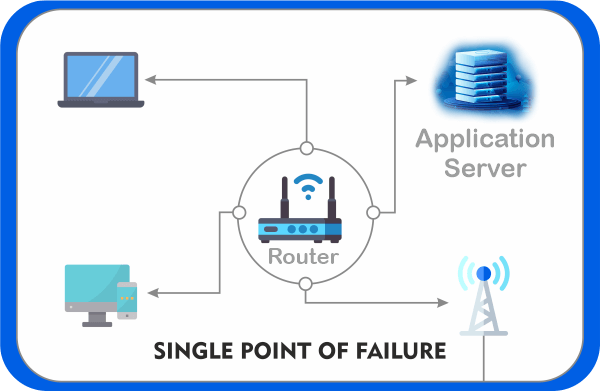What is the Full Form of SPF(i) SPF: Sun Protection FactorSPF stands for Sun Protection Factor. It is the level of protection required by the skin to shield it from the sun's harmful rays. Most of us have worn sunscreen at some point in our lives, and if someone hasn't used it, he/she should start using it right away. To enjoy outdoor activities without concern of damaging skin from sun rays, UVA, UVB, IR, and pollution, one may apply a specific sunscreen with a high Sun Protection Factor (SPF). 
Sunscreen protects skin from sunburns, suntans, photo ageing, poor complexion, skin irritation, and, in difficult situations, skin cancer. Sun Protection Factor is displayed on the sunscreen label, such as SPF 15, 20, 30, or 50. Sunscreens are created using mathematical calculations known as the Sun Protection Factor, which assesses how well a sunscreen protects against damaging UV-B rays. This number is printed on the packaging of the majority of sunscreens. Although a high SPF helps protect the skin from sunburn-causing UVB rays, UVA protection is also required. PA in sunscreen denotes the level of UVA radiation protection. PA is classified as PA+, PA++, and PA+++; the more plus signs, the more protection against UVA radiation. What are the different types of SPF?SPF typically comes in three varieties:
Is it harmful to apply high-SPF Sunscreens?Higher SPF sunscreens, such as SPF 75 or SPF 100, are not suggested since they do not give more excellent protection than SPF50 and may cause problems in individuals' skin. In sunscreens, UV-A protection should be at least one-third that of UV-B protection to ensure broad-spectrum protection. It is considered good for human skin. One should never assume that higher SPF sunscreens are preferable. For more suitable results, one can contact the experts to know about the most suitable sunscreen for a particular skin type. When should one reapply sunscreen?People who have been exposed to the sun and pollution for an extended period should reapply sunscreen. In recent years, UV radiation, infrared rays, and urban pollution have become major skin issues. As a result, people may purchase sunscreen that protects them from these potentially dangerous environmental elements. There are a few sunscreen brands on the market that offer complete coverage. Also, some of the best non-oily, non-sticky sunscreens have a lightweight gel-based texture and will be suitable for normal to oily skin, protecting our skin from UVA, UVB, IR, and urban pollution. (ii) SPF: Sender Policy FrameworkSPF also stands for Sender Policy Framework. It is an email authentication mechanism that detects forged sender addresses during email delivery. SPF can only detect a falsified sender claim in an email envelope, which is employed when mail is bounced. Only in conjunction with DMARC can it detect email forgery of the visible sender, a technique commonly used in phishing and email spam. 
During mail delivery, SPF allows the recipient mail server to verify that a message purporting to come from a given domain is sent by an IP address permitted by that domain's administrators. The DNS entries for a domain broadcast the list of trustworthy transmitting hosts and IP addresses for that domain. The proposal was initially mentioned publicly in 2000. However, it went mainly unreported. The topic was not discussed again until Dana Valerie Reese presented the first effort at an SPF-like definition on the IETF "namedroppers" mailing list in 2002. She was ignorant of the idea's discussion in 2000. The following day, Paul Vixie uploaded his SPF-like specification to the same mailing list. These postings drew a lot of interest, resulting in the founding of the IETF Anti-Spam Research Group (ASRG) and its mailing list, which expanded on the SPF concept. Among the suggestions presented to the ASRG were Hadmut Danisch's "Reverse MX" (RMX) and Gordon Fecyk's "Designated Mailer Protocol" (DMP). Meng Weng Wong integrated the RMX and DMP specs in June 2003 and invited feedback from others. Over the next six months, many modifications were made, and an extensive community began working on SPF. SPF, which originally stood for Sender Permitted From, was also known as SMTP+SPF. Nonetheless, in February 2004, its name was modified to Sender Policy Framework. In early 2004, the IETF established the MARID working group, which intended to use SPF and Microsoft's CallerID proposal as the foundation for what is now known as Sender ID; however, this failed due to technical and licencing concerns. The SPF community went back to the "classic" version of SPF. The IESG accepted this protocol version as an IETF experiment in July 2005, allowing the community to monitor SPF for two years after release. On April 28, 2006, the SPF RFC was published as experimental RFC 4408. SPF was given as a "proposed standard" by the IETF with RFC 7208 in April 2014. (iii) SPF: Single Point of FailureSPF also stands for Single Point of Failure, a system component that, if it fails, renders the entire system unworkable. SPFs are unsuitable in any system with a high availability or reliability aim, whether it be a business practice, software programme, or other industrial design. 
System robustness can be increased by including redundancy in all potential SPFs. There are several levels of redundancy. The evaluation of a possible SPF entails identifying the crucial components of a complex system that, if faulty, would result in total system failure. Highly dependable systems should not rely on such a single component. For example, a tiny tree care firm may just have one wood chipper. If the chipper fails, he may be unable to complete the current assignment and may be compelled to cancel future projects until a replacement is found. In contrast, the tree care company's owner may have extra components if the wood chipper breaks. He may have an additional, more advanced wood chipper that he may bring to the job site. Finally, at the most advanced level, he may have enough equipment to entirely replace everything on the job site in the event of numerous failures. The concept of a single point of failure has been expanded beyond engineering, computers, and networking to areas such as corporate supply chain management and transportation management. Bottlenecks and series circuits are examples of design structures that result in single points of failure. There have been some recent examples of the concept's application in transportation, including the Nipigon River Bridge in Canada, where a partial bridge failure in January 2016 cut off road traffic between Eastern and Western Canada for several days due to its location along a section of the Trans-Canada Highway with no alternate detour route for vehicles to take; and the Norwalk River Railroad Bridge in Norwalk, Connecticut, an ageing swine bridge. The notion of a single point of failure has also been used in intelligence areas. Edward Snowden warned of the hazards of becoming "the single point of failure" - the only repository of information.
Next TopicFull Form
|
 For Videos Join Our Youtube Channel: Join Now
For Videos Join Our Youtube Channel: Join Now
Feedback
- Send your Feedback to [email protected]
Help Others, Please Share










